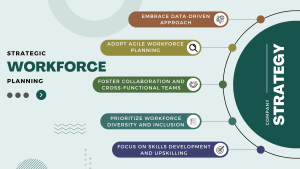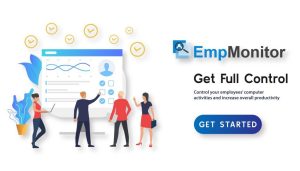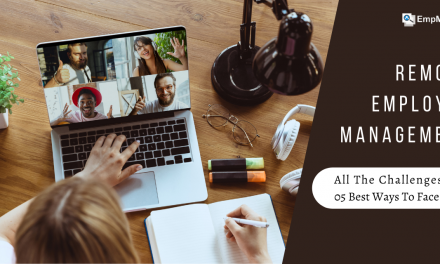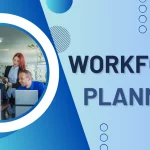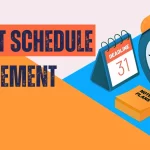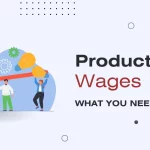Let’s imagine for a moment that you are the conductor of an orchestra. You have a vision for the music you want to bring to life, but you need the right instruments and musicians to make it happen. Further, you also have to ensure that each player is skilled and can work together to create a harmonious sound.
Just like conducting an orchestra, business leaders need to ensure they have the right team in place to achieve their goals. And that’s where strategic workforce planning comes in.
It’s all about identifying the skills and capabilities you need to access your current workforce and developing a plan to close any gaps.
Well! Workforce planning is more than just a human resources exercise. It’s a strategic business process that can help organizations stay ahead of the competition. It can help you identify emerging trends and adapt to changing market conditions. It can also help you create continuous improvement and development where employees are empowered to grow and learn.
In this blog, we’ll explore the exciting world of strategic workplace planning and how it can help your organization achieve its goals. Whether you’re a business leader, HR professional, or just curious about the topic, this blog is for you.
We will discuss the key strategies to strategize successful plans for your workforce. So, grab your baton and join us on the journey to strategic workforce planning!
Strategic Workforce Planning Framework
Here we will discuss the top 5 strategies to ace successful workforce planning and analytics.
- Embrace Data-Driven Approach
- Adopt Agile Workforce Planning
- Foster Collaboration and Cross-Functional Teams
- Prioritize Workforce Diversity and Inclusion
- Focus On Skills Development and Upskilling
Looking for workforce management solutions in detail? Read now:
Employee Burnout: 7 Tips To Deal With Effective Workforce Mangaement Solutions
So without wasting a chunk of time, let’s get into it!
Strategy 1: Embrace Data-Driven Approach
Picture this: you’re embarking on a journey to navigate the ever-changing landscape of your workforce. If you don’t have a map or any information about the terrain, your chances of reaching your destination are slim.
Similarly, in workforce planning, data acts as your guiding compass. It provides insights and knowledge about your employees, their skills, capabilities, and the organization as a whole. By harnessing the power of data, you can make informed decisions that align with your business goals and optimize your strategic workforce planning.
Unleash the Power of Data:
Gone are the days of making blind decisions based on gut feelings or limited information.
Data is the fuel that powers modern workforce planning strategies. It provides invaluable insights into workforce trends, employee performance, skill gaps, and much more. By collecting and analyzing data, companies gain a comprehensive understanding of their workforce, enabling them to make informed decisions.
Utilize Advanced Analytics and Technologies:
In today’s fast-paced business landscape, utilizing advanced analytics and technologies is crucial for companies to gain a competitive edge and make informed decisions.
One powerful tool that can assist companies in this endeavor is EmpMonitor, a cutting-edge workforce analytics platform. EmpMonitor offers a wide range of features and capabilities that enable organizations to harness the power of advanced analytics and technologies for effective workforce planning.
Are you wondering how a tool can do that? Don’t worry. We have got you covered!
EmpMonitor collects and analyzes vast amounts of data from various sources, such as employee activities, productivity levels, and time spent on different tasks. With the help of advanced analytics algorithms, it provides valuable insights into employee behavior, performance trends, and resource allocation.
But wait! How can it help your company to strategize an effective workforce plan?
Well! The insights collected by EmpMonitor, companies can identify areas of improvement, optimize workflows, and make data-driven decisions to enhance productivity and efficiency.
So, we can say it’s one of the great strategic workforce planning tools for emerging companies! Isn’t it?
Moreover, EmpMonitor integrates seamlessly with other technology tools, such as project management software and HR systems, allowing for a comprehensive analysis of workforce data. This integration enables companies to correlate employee activities with project outcomes, identify bottlenecks, and allocate resources effectively.
The advanced analytics capabilities of EmpMonitor also enable companies to identify patterns and trends in employee behavior, such as excessive time spent on non-work-related activities or potential burnout risks. It allows for proactive interventions, such as personalized training programs or workload adjustments, to maintain employee well-being and optimize performance.
EmpMonitor offers real-time monitoring and reporting, empowering companies to track key performance indicators, measure progress, and identify areas that require attention. It provides customizable dashboards and reports that enable stakeholders to visualize data and extract actionable insights easily.
Predictive Modeling and Machine Learning:
Predictive modeling and machine learning algorithms are like the crystal balls of workforce planning. These technologies analyze historical data, identify patterns, and make predictions about future scenarios. With predictive modeling, organizations can anticipate shifts in workforce demand, success plans, and even forecast attrition rates.
Machine learning takes things a step further by continuously learning from new data inputs. It can detect hidden patterns and make real-time recommendations for workforce planning strategies. By incorporating these technologies, companies gain a competitive edge in aligning their workforce with their long-term goals.
Strategy 2: Adopt Agile Workforce Planning
It’s time to embrace the power of agility!
In the fast-paced and ever-changing business landscape, agility is the name of the game. Organizations can navigate uncertainty easily by adopting an agile workforce planning approach. The benefits of iterative planning and flexibility are far-reaching, enabling companies to respond swiftly, optimize resources, and stay resilient in the face of change.
Overview of Agile Workforce Planning:
Unlike rigid strategic workforce planning models that struggle to cope with ever-changing business environments, this model is flexible.
With agile strategic workforce planning, organizations break away from linear and inflexible approaches and instead embrace iterative planning cycles.
Benefits of the Agile Approach:
The benefits of adopting an agile approach to workforce planning are manifold. Firstly, it allows organizations to quickly respond to changing market dynamics and customer demands. By continuously evaluating and adjusting their workforce strategies, companies can optimize resource allocation and stay ahead of the competition.
Secondly, agile workforce planning promotes flexibility. It enables organizations to seamlessly adapt to unexpected events, such as market disruptions or shifts in talent availability. Instead of being caught off guard, agile organizations can pivot and realign their workforce swiftly.
Implementing Iterative Planning and Flexibility:
To implement agile strategic workforce planning, organizations should embrace iterative planning cycles. It involves breaking down long-term plans into shorter, manageable timeframes. By regularly reviewing and adjusting workforce strategies, organizations can course-correct and make informed decisions based on current realities.
Flexibility is another key component of agile workforce planning. It entails fostering a culture that encourages experimentation and learning. It means empowering employees to adapt their roles and skill sets as needed, promoting cross-functional collaboration, and creating a learning environment that embraces change.
Strategy 3: Foster Collaboration and Cross-Functional Teams
Effective communication and knowledge sharing further strengthen collaboration, ensuring that strategic workforce planning is comprehensive, innovative, and aligned with business goals.
Importance of Collaboration in Workforce Planning:
There was a time when workforce planning was solely the responsibility of HR departments. In today’s interconnected world, collaboration is essential for effective workforce planning. When teams from different departments and levels come together, they bring diverse perspectives, insights, and expertise.
This collaborative approach ensures a comprehensive understanding of workforce needs and enhances decision-making.
Breaking Down Silos and Fostering Cross-Functional Teams:
Organizations need to break down silos and barriers to foster collaboration in workforce planning. It starts by encouraging cross-functional teams that bring together individuals from various departments, such as HR, finance, operations, and IT.
Cross-functional teams provide a holistic view of the organization’s workforce challenges and opportunities. By working together, team members can identify synergies, uncover blind spots, and develop tactics that align with the overall business goals. It also cultivates a sense of ownership and collective responsibility for the success of strategic workforce planning initiatives.
Facilitating Communication and Knowledge Sharing:
Communication is the lifeblood of collaboration. Effective communication channels and practices are vital for successful workforce planning. Regular meetings, brainstorming sessions, and open forums create opportunities for team members to share ideas, insights, and best practices.
In addition, organizations should embrace knowledge sharing as a core value. By creating platforms for sharing expertise, lessons learned, and successful workforce planning approaches, teams can learn from each other and avoid reinventing the wheel. This knowledge-sharing culture fosters innovation, efficiency, and continuous improvement in workforce planning.
Also Read:
Revolutionize Workforce With The Ultimate Time Tracking Software For Employees
Strategy 4: Prioritize Workforce Diversity and Inclusion
Have you ever wondered why diversity and inclusion are more than just buzzwords? They hold the power to transform workforce planning and drive organizational success.
Significance of Diversity and Inclusion in Workforce Planning:
Diversity and inclusion are not just moral imperatives; they are strategic advantages. A diverse workforce brings together individuals with different backgrounds, perspectives, and experiences. This diversity fuels innovation, problem-solving, and creativity. Inclusive strategic workforce planning ensures organizations tap into the full spectrum of talent, driving competitiveness and fostering a culture of belonging.
Implementing Inclusive Hiring Practices
To prioritize diversity and inclusion, organizations must begin with inclusive hiring practices. It means actively seeking diverse candidates and combating unconscious biases in the recruitment process. Companies should review job descriptions, widen candidate sourcing channels, and ensure diverse interview panels to eliminate bias.
Inclusive hiring practices also involve creating an inclusive and welcoming interview experience where candidates from all backgrounds feel valued and heard. Diverse and inclusive workforces are built by prioritizing diversity from the start.
Developing Diverse Talent Pipelines and Succession Plans:
The Strategic Workforce planning is not just about the present; it’s about preparing for the future. Developing diverse talent pipelines and succession plans is essential for long-term success. Organizations should provide equal opportunities for growth, mentorship, and skill development for employees from underrepresented groups.
Organizations can create targeted development programs for diverse talent and ensure equal access to leadership opportunities by identifying high-potential individuals. It fosters a culture of inclusivity, enhances employee engagement, and enables a smooth transition of leadership positions.
Strategy 5: Focus on Skills Development and Upskilling
Recognizing the Importance of Continuous Learning:
In today’s rapidly evolving world, learning should never stop. Recognizing the importance of continuous learning is vital for effective workforce planning. It’s not just about learning new skills, but also about cultivating a culture of curiosity, adaptability, and a growth mindset. By encouraging continuous learning, organizations foster employee engagement, innovation, and the ability to navigate changing landscapes with confidence.
Identifying Skills Gaps and Future Skill Requirements:
To bridge the gap between current skills and future needs, organizations must identify skills gaps and anticipate future skill requirements. This involves conducting thorough assessments of the existing workforce, analyzing job roles, and identifying emerging trends in the industry. Organizations can proactively plan for skills development and upskilling initiatives by understanding the evolving demands.
Investing in Training Programs and Upskilling Initiatives:
Once skills gaps and future skill requirements are identified, it’s time to invest in training programs and upskilling initiatives. This could involve providing access to relevant courses, workshops, certifications, or even partnering with educational institutions. Upskilling initiatives should be tailored to individual employee needs, aligning with both their aspirations and organizational goals.
Investing in training programs and upskilling initiatives not only enhances the capabilities of the workforce but also boosts employee morale, loyalty, and retention. It demonstrates a commitment to employee growth and development, creating a positive work environment and a culture of excellence.
For more details; hop into our blog post!
How Do You Evaluate Which Workforce Management Software Is Best For Your Business?
Conclusion
As we reach the end of our journey exploring strategic workforce planning, it’s clear that adopting a forward-thinking approach is crucial in the dynamic business landscape. Organizations must embrace change, anticipate future needs, and proactively plan for workforce challenges.
By implementing strategies such as data-driven decision-making, agile workforce planning, collaboration, diversity and inclusion, skills development, and remote work arrangements, companies can position themselves for success. These strategies empower organizations to make informed decisions, adapt to evolving market demands, unlock the potential of their workforce, and foster a culture of innovation and growth.
So, as you embark on your own strategic workforce planning journey, remember the importance of being forward-thinking. Embrace the challenges and opportunities that lie ahead, and approach workforce planning as an ongoing process rather than a one-time task. By doing so, you’ll be well-equipped to navigate the dynamic business landscape and build a resilient, adaptable, and high-performing workforce that propels your organization toward long-term success.


